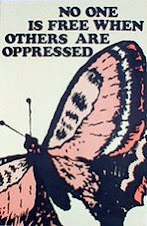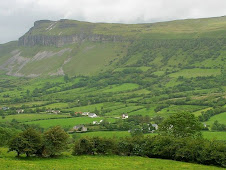 At least a quarter of the world's mammal species are at risk of extinction, according to a first assessment of their status for a decade.
At least a quarter of the world's mammal species are at risk of extinction, according to a first assessment of their status for a decade.The Red List of Threatened Species says populations of more than half of mammalian species are falling, with Asian primates particularly at risk. The biggest threat to mammals is loss of habitat, including deforestation.
But there is good news for the African elephant, whose recovery leads to his removal from the high-risk list.
This year's Red List looks at 5487 mammals, and concludes that 1141 are currently on the path towards disappearance. This may be an under-estimate, the authors caution, as there is not enough data to make an assessment in more than 800 cases. The true figure could be nearer to one-third.
"Within our lifetime, hundreds of species could be lost as a result of our own actions, a frightening sign of what is happening to the ecosystems where they live," said Julia Marton-Lefevre, director-general of the International Union for the Conservation of Nature (IUCN) which publishes the Red List.
"We must now set clear targets for the future to reverse this trend, to ensure that our enduring legacy is not to wipe out many of our closest relatives."
The report's authors say that the current concern with financial matters must not be allowed to obstruct the decline in the Earth's natural systems.
"The financial crisis is nothing compared with the environmental crisis," the deputy head of IUCN's species programme, Jean-Christophe Vie, states.
"It's going to affect a few people, whereas the biodiversity crisis is going to affect the entire world. So there is a risk that because of the financial crisis, people are going to say 'yeah, the environment is not that urgent'; well, it is really urgent."
About 40% of mammal species are compromised because human expansion is putting a squeeze on their habitat. This is especially important across the tropics, the regions with the highest diversity of land-based mammals.
South and Southeast Asia are identified as regions where extinctions are especially likely in coming years, as that is where the size and living standards of the human population are rising fastest.
The second biggest threat on land is identified as hunting, for food or medicines.
 However, where hunting has been controlled and serious conservation programmes were implemented - as with the southern and eastern populations of the great African elephant - populations and entire species can recover.
However, where hunting has been controlled and serious conservation programmes were implemented - as with the southern and eastern populations of the great African elephant - populations and entire species can recover.The elephant's risk status has now been lowered from 'Vulnerable' to 'Near Threatened'.
 Some species are included in the list for very specific reasons, such as the Tasmanian Devil (right), which has been decimated by a viral cancer.
Some species are included in the list for very specific reasons, such as the Tasmanian Devil (right), which has been decimated by a viral cancer.In the seas, by-catch - entanglement in fishing nets, which is usually although not always accidental - emerges as the biggest factor behind current declines, affecting a staggering 79% of marine mammals.
The assessment - which is also published in the journal Science - warns that lack of data about marine mammals may be masking a bigger decline.
"Whales, dolphins, porpoises, and sirenians (manatees and dugong) are so difficult to survey that declines that should result in a Vulnerable listing would go undetected at least 70% of the time," the authors write.
Outside the mammal arena, the Indian tarantula enters the Red List for the first time, a consequence of over-harvesting for the pet trade.
A further 366 amphibians have been added to the list. This is the most threatened animal group of all, with about one-third on the high-risk list.
A new assessment of climate impacts on the natural world suggests that many species not currently on the danger list will enter it as global temperatures rise, particularly in East Africa and parts of South America.
The Red List is published approximately once every year. Although designed as the definitive global list of threatened species, in practice the rankings come from assessments covering different types of plants and animals, and some areas of the list will be more up to date than others.
An assessment of sharks, originally slated for inclusion this year, was delayed and will probably be released later in the year.
In an attempt to make species assessments more certain, the Zoological Society of London (ZSL) is developing what they colloquially term a "Dow Jones index" for biodiversity.
The idea is to take a random sample of all the world's species, which will be representative of the whole, and revisit it regularly - perhaps once every five years - to gain a better idea of global trends.
"We are now emerging from the dark ages of conservation knowledge, when we relied on data from a highly restricted subset of species," said Jonathan Baillie, director of the conservation programmes of ZSL.
The first group to be assessed this way is the land-dwelling vertebrates, but the project will eventually encompass insect, fungi, plants, and various types of marine creatures.
RED LIST DEFINITIONS
Extinct - Surveys suggest last known individual has died.
Critically Endangered - Extreme high risk of extinction.
Some Critically Endangered species are also tagged Possibly Extinct.
Endangered - Species at very high risk of extinction.
Vulnerable - Species at high risk of extinction.
Near Threatened - May soon move into above categories.
Least Concern - Species is widespread and abundant.
Data Deficient - Not enough data to assess.
Extinct - Surveys suggest last known individual has died.
Critically Endangered - Extreme high risk of extinction.
Some Critically Endangered species are also tagged Possibly Extinct.
Endangered - Species at very high risk of extinction.
Vulnerable - Species at high risk of extinction.
Near Threatened - May soon move into above categories.
Least Concern - Species is widespread and abundant.
Data Deficient - Not enough data to assess.







































No comments:
Post a Comment